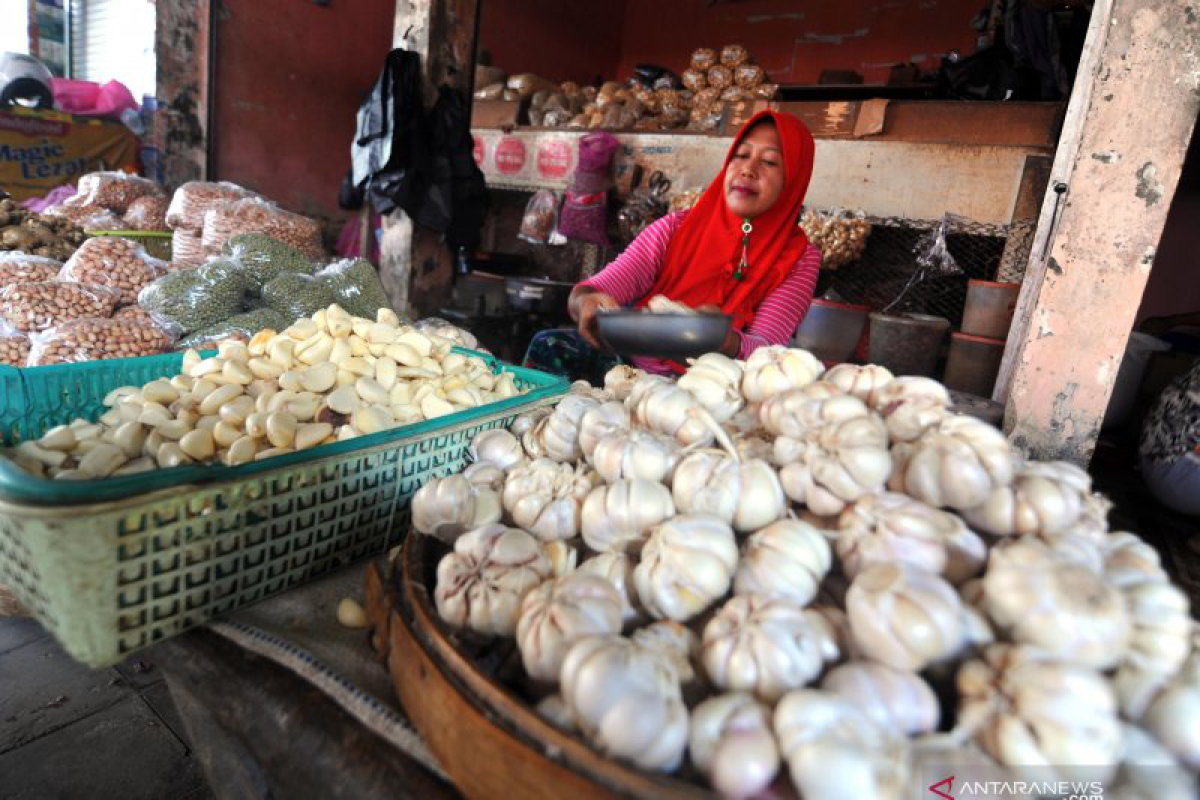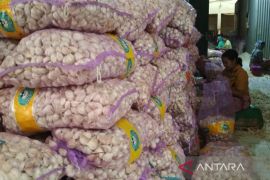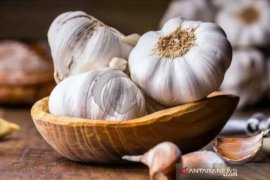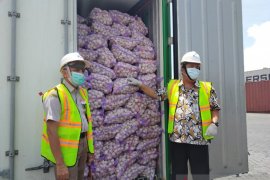Although a week, or long before entering the holy month of Ramadan, the nation's key officials, starting from the competent and responsible ministry until Vice President Jusuf Kalla, vociferously claimed that the supply of the commodity will suffice for the community.
The government, through the commerce and agriculture ministries, had taken precautionary measures by importing millions of tons of garlic and conducting market operations, but to no avail.
Despite inventories being adequate and supply to traditional markets reportedly smooth, the prices are spiraling out of control. The biggest question lies in what exactly caused this to happen and did not exclude the likelihood of speculators acting to garner profits, but has conversely made people from the lower strata of society cry foul.
This problem has been omnipresent in Indonesia and typically observed before or on certain days, such as fasting and Eid al-Fitr, when there is rise, especially for basic items, such as chili, meat, eggs, rice, cooking oil, and flour.
This time, Indonesians are also reeling under the major problem of the soaring price of garlic. The question that arises is why is the price of agricultural commodities always triggering a furor? Is this not a nation that holds immense wealth and fertility of the land bestowed by God, the Almighty, than any other country.
Nora, a trader at the Kamboja Traditional Market in Palembang City, remarked that the hike in onion prices was spurred by stocks from the Jakabaring Central Market and several inadequate supply areas.
"Shallot also shot up by Rp40 thousand per kilogram, as the stock had been low since before fasting. Several buyers had raised complaints, asking it to be lowered," Nora remarked.
Nora noted that owing to garlic playing an indispensible or even dominant role in nearly all culinary delicacies in Palembang City, including pempek, model, tekwan, and laksa in the manufacturing process, the increase in the price of this commodity during Ramadan had left the community in a lurch.
Palembang's traditional food production will undoubtedly rise, particularly while entering Ramadan.
Nora views the local Trade Office's low-cost market operations to have been of little help to the people in obtaining garlic at low prices, especially seasonal traders of takjil snacks.
"The crucial aspect is that the stock is quite new. The price can plummet, as the cheap market only has a constraint," he added.
South Sumatra Trade Service Head Yustianus explained that the cheap market operations in the regency or city were aimed at curbing the hike in prices of basic commodities, particularly garlic.
He appealed to the public to not harbor concerns, as the government was taking steps to tackle the turmoil due to garlic by handing out import licenses to eight companies, with a quota of 520 thousand tons, that were ready to enter the traditional markets, including Palembang.
Blacklist importer
To lower the impact of the fluctuating garlic prices, Agriculture Minister Andi Amran Sulaiman has prepared a "black list" or laid a ban on 56 garlic importers failing to comply with regulations, such as by engaging in price games and not conducting mandatory planting.
"We have blacklisted 56 firms that are always manipulating the prices to ensure that stability is maintained in the commodity prices of garlic," Amran remarked after conducting market operations for garlic commodities at the Kramat Jati Central Market on Sunday.
Amran revealed that blacklisted importers comprised 41 importers banned from importing in 2019 and 15 importers in 2018 failing to adhere to the mandatory planting policy of five percent of the total imports. Most of these blacklisted importers are domiciled in Jakarta, Surabaya, and Medan.
During this market operation in Kramat Jati Central Market, the agriculture minister offered 115 thousand tons of garlic stocks to meet the requirements of some 50 thousand tons during Ramadan.
Garlic imports from China is a realization of import agreements granted by the Trade Ministry to importers, with a total volume of 115 thousand tons.
Director General of Horticulture at the Ministry of Agriculture Suwandi remarked that the availability of garlic is gradually normalizing, with the imported variety entering the market.
Apart from 115 thousand tons having already entered the market, the agriculture ministry has also issued a Recommendation for Horticultural Product Permits (RIPH) to 19 importers, with a volume of submission of 245 thousand tons of garlic.
"This comprises the first stage at the end of March 2019, with as many as eight importers, or equal to 120 thousand tons, and stage two constituting nearly 11 importers equivalent to 125,000 tons," Kelvin stated.
In the path to achieving self-sufficiency, the Ministry of Agriculture has started filtering and sifting out importers, who have consistently conducted the mandatory planting.
The Agriculture Ministry's data noted that the planting area of garlic in 2018 reached over eight thousand hectares (ha), up by some 400 percent, from the earlier planting area covering two thousand ha annually.
Until 2020, it is targeted to grow garlic in 20 thousand to 60 thousand hectares, with the peak being in 2021 when planting will be planned in over 80 thousand hectares to cater to the nation's demand for garlic.
EDITED BY INE
Editor: Fardah Assegaf
Copyright © ANTARA 2019












